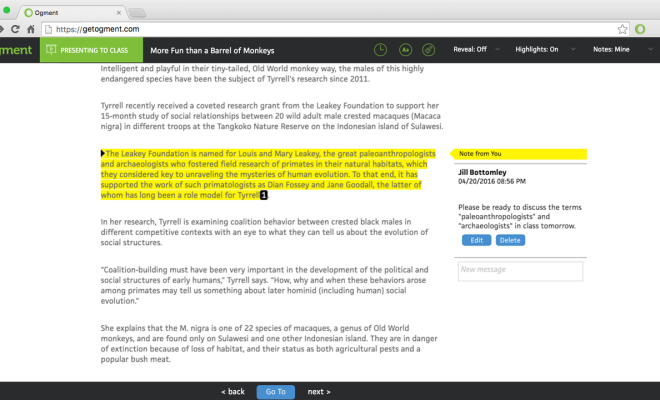Passive-Aggression: Everything You Need to Know

Passive aggression is a tactic used to communicate unpleasant emotions like resentment or wrath covertly. It may be difficult to recognize passive-aggressive tendencies, which can ruin relationships at home and work.
What Is Passive Aggression?
Some individuals show their hate in passive-aggressive methods meant to harm and confound their target rather than becoming openly upset. In both their personal and professional lives, most individuals may encounter passive hostility from others at some point. Examples include a roommate who leaves a beautiful but critical note about the one cup that was left unwashed or the report a coworker keeps “forgetting” to complete.
The passive-aggressive person will only get defensive in response to nagging or becoming upset, often leading to them making excuses or rejecting any responsibility. According to a recent study, there are better methods to deal with passive aggression and manage disagreement in relationships.
What causes passive aggression?
For whatever reason, a person may not feel comfortable openly expressing their wrath, rage, or irritation, which is where passive aggressiveness comes from. It’s crucial to realize that tremendous pain and misery lurk underlying all nasty comments while dealing with passive-aggressive conduct.
What are some examples of passive-aggressive behavior?
Avoiding accountability for tasks, delaying and even missing deadlines, hiding crucial information, and repeatedly delivering less than one is capable of are some classic examples of passive aggressiveness. When a person engages in passive-aggressive conduct, the family may have issues since they cannot trust them to keep their word. At work, passive aggressiveness may damage collaborative endeavors, leaving objectives unmet.
How does passive-aggressive behavior affect others?
Because passive-aggressive conduct is difficult to recognize, difficult to prove, and could even unintentional, it can be very irritating for the target. Because many individuals find it difficult to have an open and honest talk about the subject, passive aggression may result in increased conflict and relationship problems.
Why is passive-aggressive behavior dangerous?
Relationships are especially vulnerable to passive hostility. When attempting to get the cooperation of the passive-aggressive individual, the target often feels helpless and irritated. Consequently, a person could develop a habit of accepting full responsibility for the partner’s passive-aggressive conduct and adopting an unwelcome parenting role. If the relationship continues, the disagreement will inevitably escalate and need to be addressed.
How Do Passive-Aggressive People Act?
Although the exact definition of passive-aggressive conduct is elusive, experts agree on the most obvious warning flags, which include evading responsibility, being purposefully ineffective, and refusing to confront problems openly and frankly.
The passively aggressive individual often abandons a task unfinished or “nearly” finished. They are experts at discreetly undermining others when they disagree with a plan of action and regularly arrive late. To make their point, they often use backhanded praise or quiet treatment.
How can you tell if someone is being passive-aggressive?
Instead of openly expressing their rage, these people will conceal it. Making explanations or blaming others for one’s conduct are examples of passive-aggressive behavior (e.g., giving someone the silent treatment). Reduced eye contact, continuous forgetfulness, and ignoring the targeted person during a group discourse are subtle yet nefarious examples of passive hostility.
Are people aware when they’re being passive-aggressive?
No, never. Some individuals are so used to burying their rage that they are no longer even aware that it exists. Suppose a person doesn’t consider themselves to be a “angry person” or doesn’t think they feel anger regularly. In that case, it is a key indicator that they use passive-aggressive behavior in their relationships. They can start acting like the victim or martyrs to get attention, or they might start saying “yes” when they mean “no.”
Is passive-aggressive behavior controlling?
When someone doesn’t enjoy confrontation, it’s not unusual to utilize passive aggression to obtain what they want. For example, a parent who doesn’t want the nighttime duties could play with the kid instead of putting them to sleep as normal, forcing the other parent to take control once again. Although these cunning strategies could provide a quick victory, it might be important to confront the passive-aggressive individual in the long run to rebuild trust in the relationship.
Is the silent treatment passive-aggressive?
Directer methods of expressing animosity include extreme examples of the “silent treatment,” including utterly ignoring someone and not returning their communications. Other modest yet passive-aggressive behaviors include not acknowledging a buddy in the corridor or pretending not to hear a colleague’s statement. If you see any of these behaviors, you are dealing with a passive-aggressive individual.
Is silent treatment a form of emotional abuse?
The victim might be wounded and shamed by passive-aggressive silence. When someone in authority (like a parent) utilizes silence to control a helpless person, it might be considered a kind of verbal abuse that is “quiet” (like a child). A strong punishment that may have long-term effects is being ignored or having someone act like you don’t exist.
How can you handle the silent treatment?
Someone’s passive-aggressive conduct may be altered with better communication. Stop engaging in poisonous conduct as soon as you recognize it. Instead, acknowledge the person’s inward rage, which they will probably try to hide. Recognize their areas of expertise and support the desired behavioral change. If necessary, don’t be hesitant to bring up the matter again.
How to Deal With Passive-Aggressive People
A person may not be conscious of their underlying unhappiness, rage, or insecurity, which may manifest as passive aggressiveness. Being passive-aggressive might express such feelings or a control-seeking maneuver in a relationship.
That may influence how you react if you keep it in mind. Even while it might be tempting to respond passively aggressively yourself, doing so would probably just encourage the other person to go on acting in the same manner. If you are addressing an underlying feeling of insecurity by doing this, it may be helpful to show the passive-aggressive individual that you appreciate their viewpoint. However, you shouldn’t make excuses for unjustified wrongdoings or otherwise appease them.
The best course of action is often to minimize the time you spend with them, if feasible. However, if you decide that a confrontation is necessary to move things forward, refrain from being accusatory while gently describing how the conduct makes you feel.
What can you say to a passive-aggressive person?
Hold a passive-aggressive individuals responsible for their harmful actions while interacting with them. If you haven’t done anything wrong, stop saying sorry. Try once again putting your needs first. They probably want you to explode or respond with your passive aggressiveness, so don’t go along. Instead, speak to the situation calmly and openly, being clear about what they have done or said that has hurt you.
How do you respond to passive-aggressive behavior?
When reacting to passive-aggressive conduct, it’s important to control your own emotions. Before replying, take a few deep breaths or briefly remove yourself from the situation. Make an effort to address the person’s issues personally. Limit your time with the passive-aggressive individual and establish explicit limits, if required.
What is stonewalling in a relationship?
Stonewalling happens when one partner becomes a stone wall effectively and shuts down, withdraws, and stops reacting entirely. When a partner wants to have a serious conversation, stonewalling may also entail passive-aggressive avoidance techniques, such as making excuses about being busy at work. When a partner refuses to engage in sexual activity, women often feel their pulse rate rise while males are less likely to get physically aroused.
How can you cope with stonewalling behavior?
Stonewalling conduct may be avoided by maintaining as much calm as possible. Using passive-aggressive strategies like stonewalling will be less necessary if a couple can communicate openly and without becoming defensive. To mend the harm that stonewalling has done to your relationship, begin to practice affirmation and other communication techniques that make marriages work.






